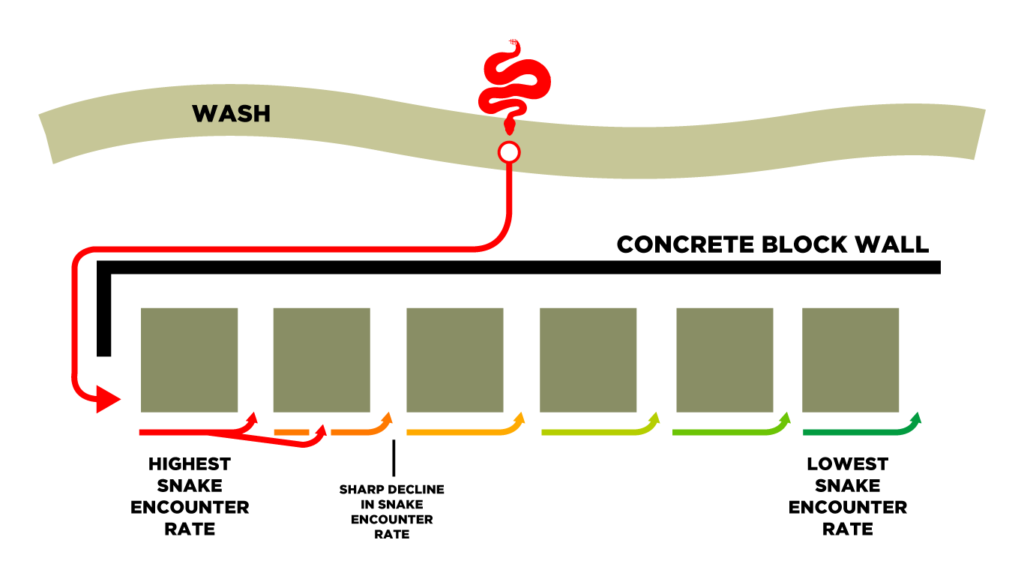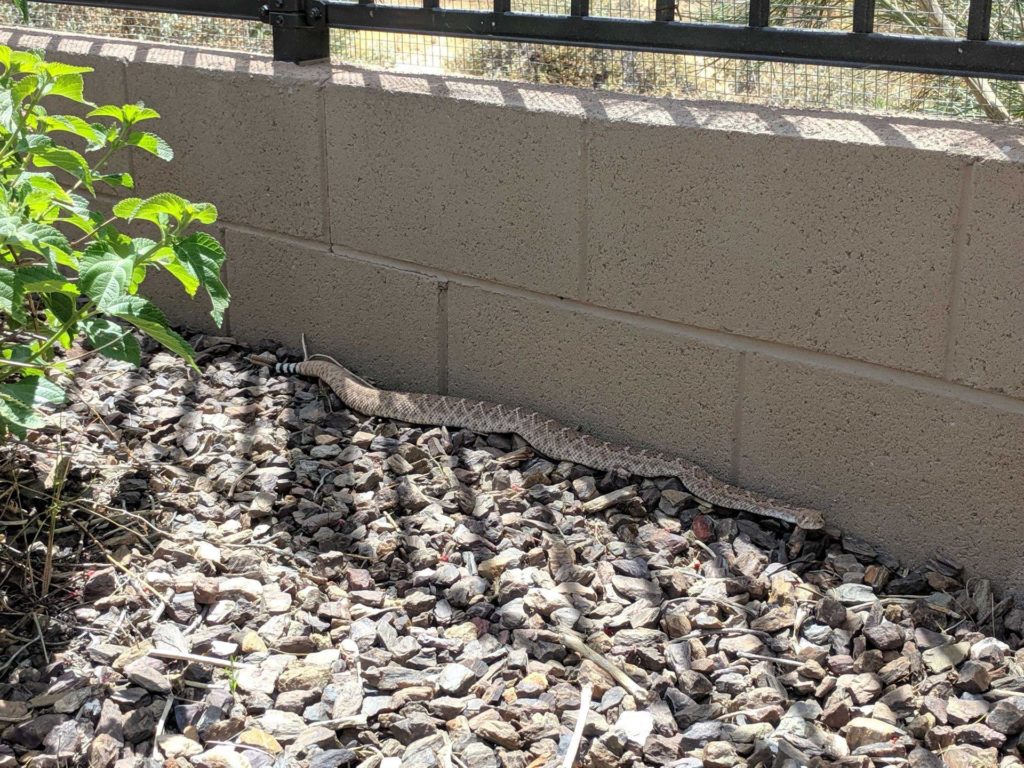
Even in rattlesnake-heavy areas, all things being equal – some houses are much more prone to snake encounters than others.
Based on 8,000+ call records to our 24/7 rattlesnake removal hotline, some minor differences in the placement and features around your home can make a huge difference … and unfortunately, there’s not much you can do about it.
The biggest of these environmental factors is just the placement of your home. Many residential developments share a block wall behind rows of houses, with the end being open as drainage or access. In this incredibly common situation, the homes found at the end of the block wall will likely see many more snakes than other houses on the street.
These block walls also help provide shade, and brush and debris often accumulate here as well. Some communities even edge these walls with piles of rock, which makes a very enticing situation for snakes and their prey.
Think of that wall as a funnel. Snakes (and other animals) traveling through the area can’t climb over it and are forced to go one way or the other. At the end of the wall, the first home “catches” any snake first. They either continue around the wall to the backyard or keep moving straight. For this reason, snakes are more often found in the yards of the first home, and the second home to a lesser degree.

After the second home, the chances of rattlesnakes in the yard tends to decline rapidly. A rattlesnake found at the 4th or 5th home in line had to first travel through multiple yards and pass up whichever opportunities are present.
I live on the corner! What can I do about it?
The first thing you can do is to make it so that when a rattlesnake does come around that wall, it won’t find anything that will make it want to stay. Get familiar with our guide to keeping your yard snake-free, and don’t be afraid to go a little bit overboard. Anything that you can do to deny resources, food, water, shelter, and access will help the snakes keep moving down the street (sorry, neighbors).
This is also why it’s extremely important if you are considering rattlesnake fence installation for your home, that the side gates are properly secured. Even with low view fencing in the back, rattlesnakes are just as likely to just come through the front gate, where they can get “stuck” in the yard. (this is the reason why rattlesnake fence installation is an “all or nothing” solution – anything less is just a snake trap).
Consider keeping the trash cans in the garage instead of in the side-yard, if the side-yard is on the side of the property bordering the opening. Our rattlesnake removal team has removed countless rattlesnakes from this exact situation. The less cover, the better.
If the edges of the property are lined with deep rock piles, as is often the case in newer communities around the valley, your chances of seeing a snake just went up. Do everything you can to prevent bushes and weeds from growing around the edges, along the wall, and create an open space between the wall and the open desert behind it. Much of this is likely managed by the HOA, so be sure to mention to them that you are concerned for your safety and provide reasoning, and you may be given permission (or they will do it).
And as always, the single best thing a person can do to stay safe around rattlesnakes is to learn everything they can about them. Get the dogs snake aversion trained, learn how to identify the snakes in your area, and be informed and ready for the inevitable encounters.
